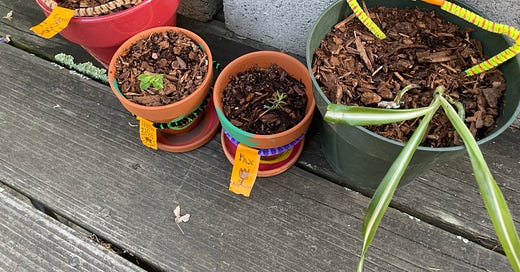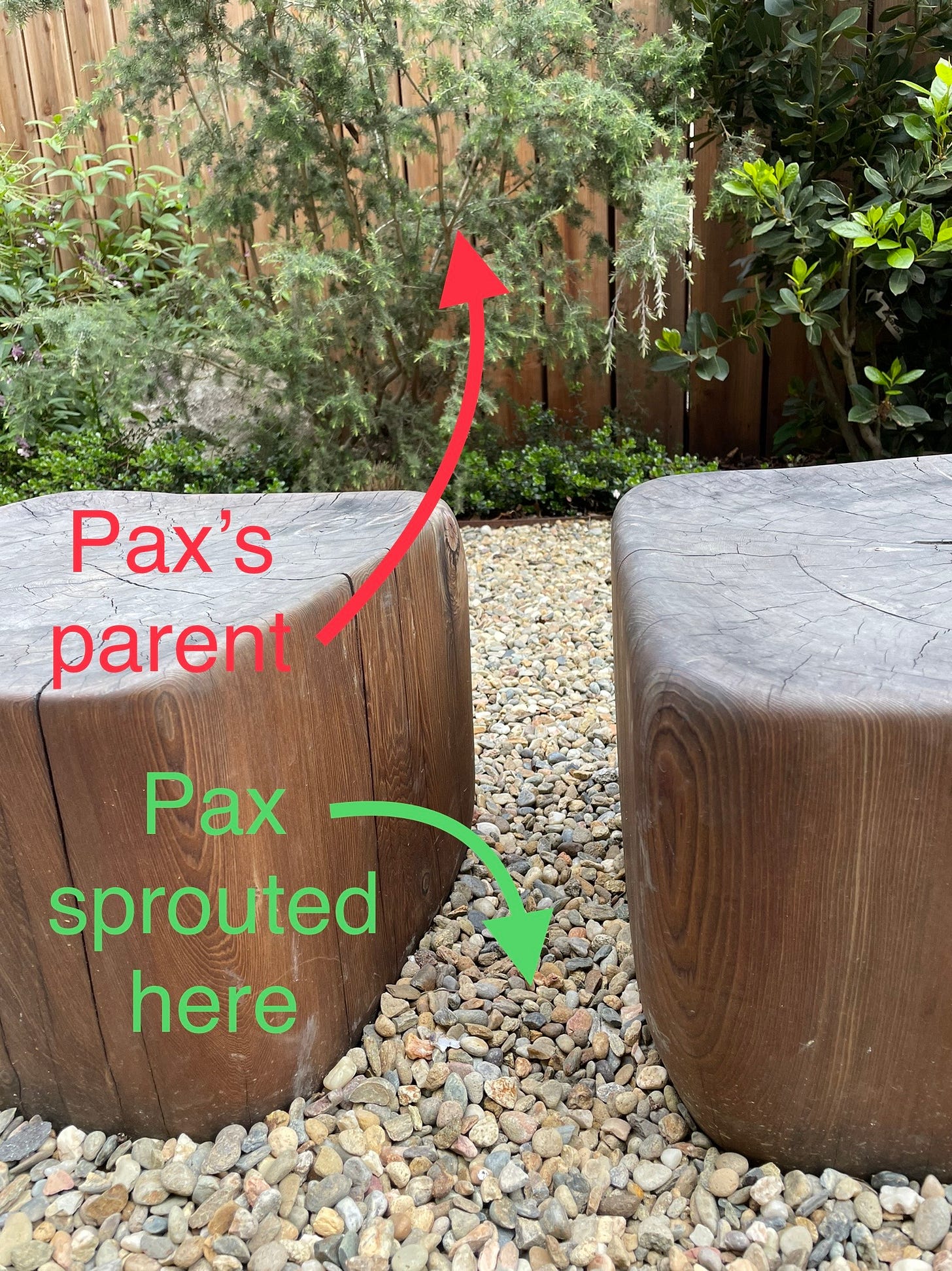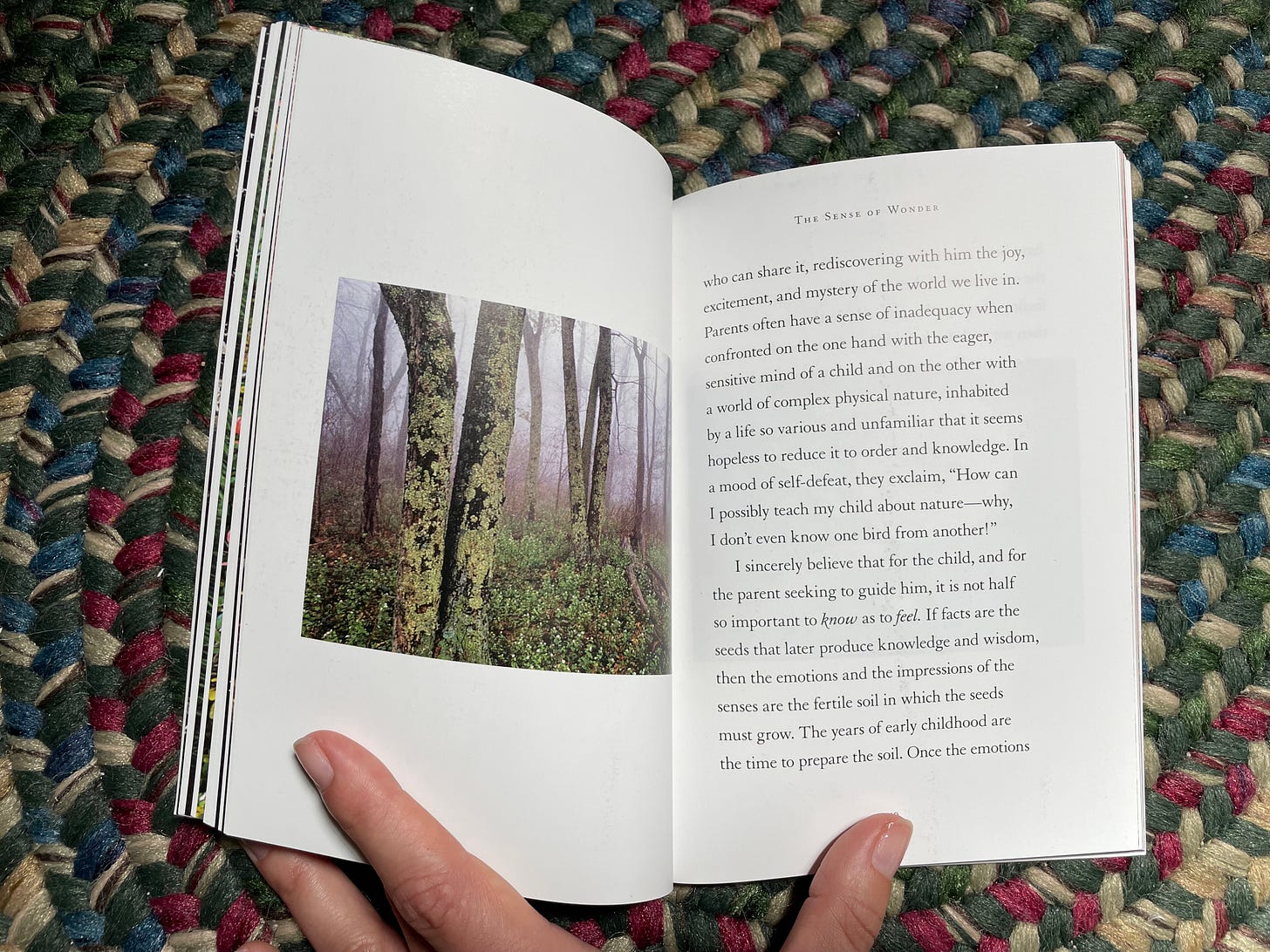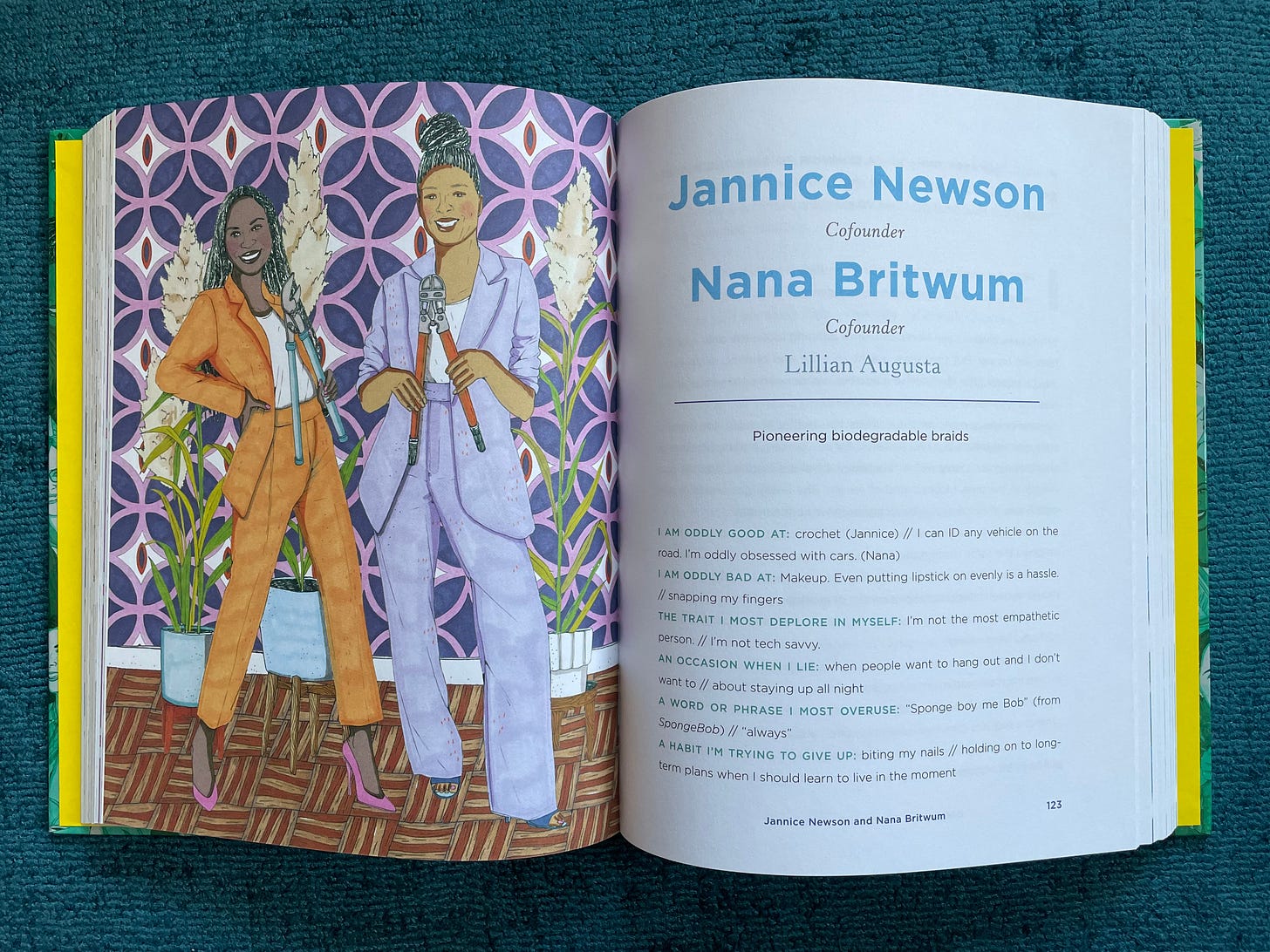The kids and I potted a few tiny sprouts last weekend. Most of them were garden volunteers, one was purchased at an after-school plant sale. Hattie named them.
“Sam” is the school weed (actually broccoli). “Little Ellis” and “Mary Anne” are the determined descendents of plants we thought we’d eradicated during the big relandscape of 2020. Both popped up in planters that clearly still remember who used to live there. The tiny gray honey myrtle sapling, “Pax,” pushed its way up through the pebble in our garden, in a quiet 3-inch spot between our redwood vertibrae.
The weekend we potted these was Earth Day weekend. It’s a strange holiday. We know a single day for thinking about sustainability isn’t nearly enough. We know we need to do our best everyday to make choices and actions that minimize our ecological footprint. We set habits in service of this goal: walking to school, composting kitchen scraps, reducing household plastics, and carefully considering our wants vs. needs. But Earth Day does give me a little extra fire to double down on conversations about climate change. The thing is, the kids know. I remember feeling this way as a kid, the indignant outrage that the adults of the world had done such a rotten job of taking care of the planet. So I’m under no illusion that this is a top-down teaching moment. If anything, it’s a reminder that we actually need to really hear our kids’ critiques when our walk doesn’t match our talk.
Although Our Kids seem to have an innate appreciation for the splendor of nature and the importance of protecting the planet, there is a related concept that they and we adults both totally struggle with: long-term thinking. They[we] want the thing NOW. We reinforce this idea with countless mantras: the power of now, now or never, seize the moment, and on and on. And while it’s true that there is no time like the present, what we do in each moment adds up to a habit, a pattern, a path, a trench. So, this awareness of the longer horizon is something I’m trying to incorporate into our conversations around this spring holiday, and potting plants felt like a good way to embody that.
Another way we introduce and process information with the kids is via bedtime reading. In the last few weeks we’ve leaned in with books for Hattie and Ellis (and us adults) that promote wonder and respect for nature, that foster long-term thinking, and that question our habituated comforts. Here’s what we’ve read…
“The Sense of Wonder” (1956) is Rachel Carson’s invitation to explore the outdoors with kids ***without worrying what you can teach them*** She just says: go with open senses. Nurturing wonder and affinity is both enough AND imperative. [This one is more of a solo read, to inform your outdoor time with littles.]
Audience: General, adult [libraries, book stores]
“What Is A River” (2021) and “Water” (2017) are picture books about the ways people and animals rely upon water. Both use nested storytelling to position the authors’ voices, drawing on their personal experiences as well as folk stories and history to share broader messages about the politics of water management and the repercussions of misuse.
What is a River. 2021, Monika Vaicenavičienė. Target age: Gr3-5 [similar titles for younger and older kids] [read aloud, libraries, book stores]
Water. 2017, Subhash Vyam with Gita Wolf. Target age: PreK-Gr5 [libraries, book stores] Sadly, I couldn’t find a read-aloud for this wonderful book, but you can read a detailed review by the always brilliant Maria Popova [here].
“Beetles For Breakfast” (2021) and “Girls Who Green The World” (2022) are both future-oriented books about innovation and actions that can lead to more sustainable consumer habits and policies. In simple chapters focused on common settings (inside our homes, around town, etc), “Beetles” challenges readers to consider the potential in plentiful but undervalued or outright taboo resources, while also explaining why current practices are not sustainable. I like this book because it helps to prepare kids for a future that could look very different. “Girls Who Green” profiles inventors and change-makers who are passionately committed to sustainability. Each profile starts with a familiar “what are your super/normcore powers” type questionnaire, followed by a short narrative about their work. This one is nice because it illustrates a wide variety of approaches to mindful action and behaviors. Maybe we don’t have to give up glitter afterall?
Beetles for Breakfast. 2021, Madeleine Finlay, Jisu Choi. Target age: Gr2-6 [vid preview (min3-5), libraries, book stores]
Girls Who Green the World. 2022, Diana Kapp, Ana Jarén. Target age: 12+ [webinar with the author, libraries, book stores]
Have you really read this far??? Wow, what a gift! Thank you! I had fun compiling this reading list, and it’s something I’d like to keep doing. I’m considering setting up a dedicated vehicle for recommending kids’ nonfiction/educational reading. Maybe it’s an Instagram account, maybe it’s a separate newsletter. I’m not really sure yet, so I’m using this personal newsletter to try some stuff out. My goal is to create the lists on a regular basis (weekly or every-other week). It wouldn’t always be five books, and might often be only two or three. I may experiment with recording read-alouds (or at least samples for longer books). Many of you have little kids in your lives, so I’d love to hear if this would be useful for you, and if you have format suggestions. For comparison, I made a MUCH briefer post in my personal Instagram account [here] to experiment with that approach.
Thanks so much for your attention and time! I’ll send more when I’ve got something worth sharing.












